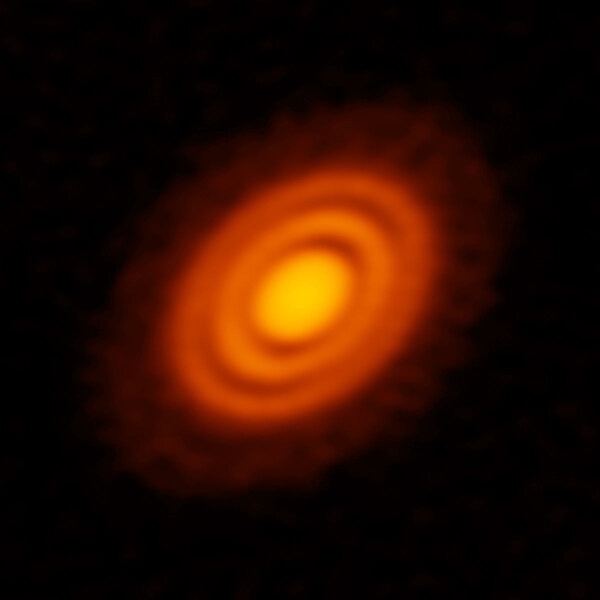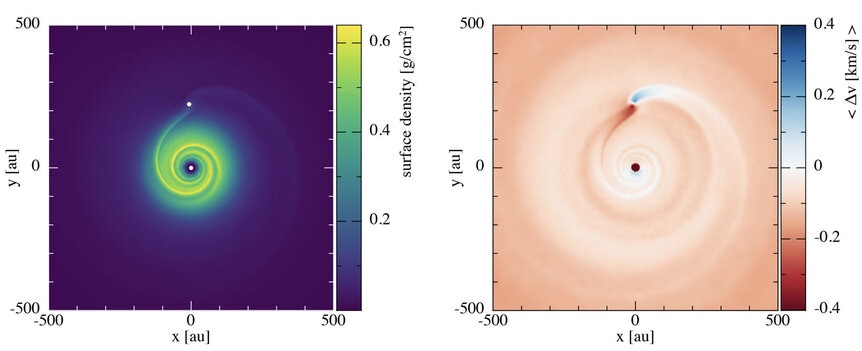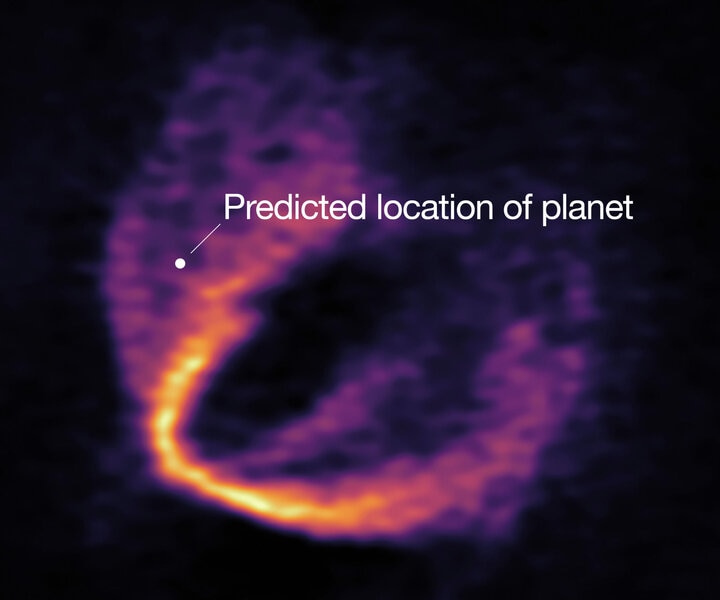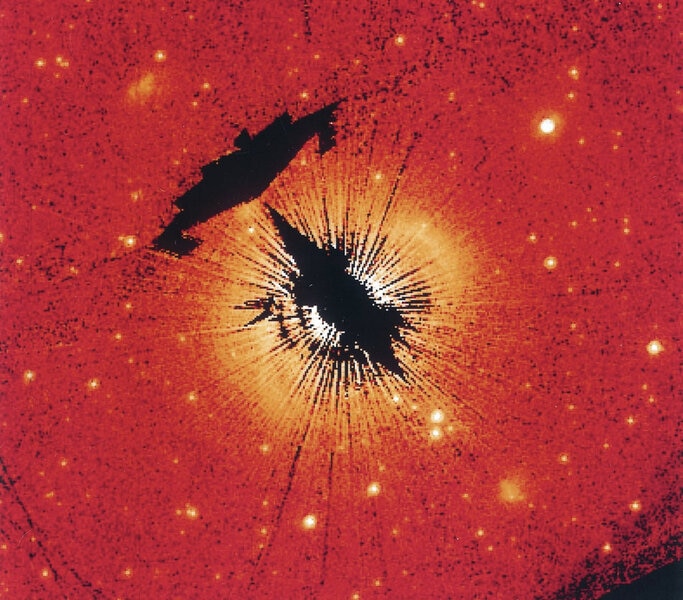Create a free profile to get unlimited access to exclusive videos, sweepstakes, and more!
Hey, we were right! Planets found around the baby star HD 163296
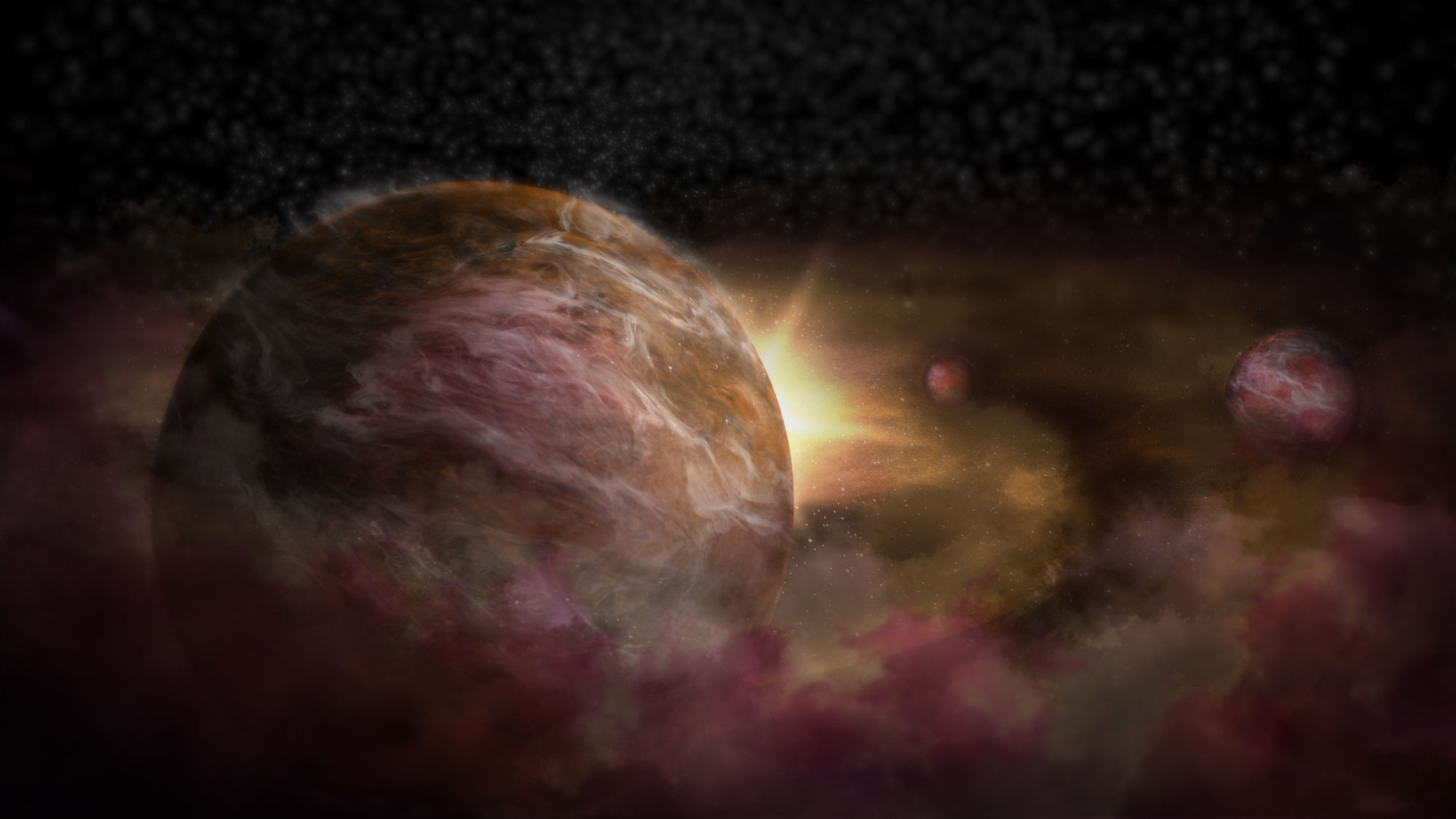
This is very cool news: Three infant planets have been discovered orbiting the nearby star HD 163296.
It’s also cool news for me personally: I worked with a team on research that predicted one of those planets, and it’s right where we said it would be.
OK, more on that in a sec. First, the discoveries.
HD 163296 is a very young star about 330 light years away. It’s only 4 or so million years old — compare that to the Sun’s age of 4.6 billion years, a thousand times older — and has about twice the mass of the Sun. It’s been known for years to have a huge disk of gas and dust around it, left over from its formation.
It’s that disk from which planets are born. And now two independent teams of astronomers, both using the Atacama Large Millimeter/submillimeter Array (ALMA), have reported find strong evidence of planets around the star; one team found two closer in, and the other team found one farther out.
The two inner planets were found in a nifty way. As the gas and dust orbits around the star, sometimes they approach us and sometimes they move away. This generates a Doppler shift in the light, blueshifting it on approach and redshifting it on recession.
If you plot the orbital speed of the disk versus distance from the star you should get a nice smooth curve, more or less showing that the stuff closer in moves faster, and the stuff farther out slower.
What the astronomers found was that, in two places, there were changes in that smooth distribution. Basically, if you form a giant planet in the disk it will pull particles in toward itself due to its gravity. This changes the pressure in the disk, which in turn changes how the local gas and dust orbit. These two perturbations were at about 12.5 and 20.5 billion kilometers out (a long way; Neptune is about 6 billion km from the Sun), and the data were matched nicely if, at each of those two locations, there was a planet with a mass roughly about the same as Jupiter’s.
The outer planet was found a bit more directly: The second team found a big kink in the gas and dust distribution, as if the material had been pulled away from a normal orbit. And that’s literally true: The presence of a third planet about 39 billion km out from HD 163296 and with roughly twice the mass of Jupiter is disturbing the gas and dust, its mighty gravity changing the way they orbit the star.
It’s this third planet I’m happy with. A long time ago, before I became the work-from-home goat herder I am now, I was on the team helping calibrate and use the Space Telescope Imaging Spectrograph on board Hubble. This is a camera that can take images as well as spectra (breaking up light into individual colors to help investigate an object’s properties).
It was particularly good at getting images of protoplanetary disks around stars. One of our team scientists, Carol Grady, had a project to look at several, including the one around HD 163296. My job was to get the raw data off the camera ready for analysis, which was a decently difficult task. One problem is that the star is hundreds of thousands of times brighter than the disk, so we place it behind a long strip of metal called an occulting mask. Even then it needs to be subtracted from the data, which is delicate and tricky.
But doable, so I did it. Carol then analyzed the data and found a dark lane, a gap, in the disk about 48 billion kilometers out from the star. However, that was before we had an accurate distance to the star; scaled appropriately to the now better-known distance, it matches almost exactly what was found by the second team of astronomers using ALMA!
So that put a smile on my face. I did some research myself with STIS, but far more often I worked with other scientists on calibrating their data and discussing the science. Quite a bit of it laid the groundwork for future work — that’s rather an important part of science — and it’s really quite satisfying to see that play out, especially when it means finding a literally new planet.
